
While many traders (myself included) have been seduced by the fast profits that can be earned day trading in the currency markets, it is perhaps in the big moves where the greatest opportunities lie.
But most forex traders don't have the patience or discipline.
As stock operator Jesse Livermore said, the "money is made in the waiting" and as Warren Buffett's sidekick Charlie Munger added: "most investors have problems with waiting".
Aside from being more patient, the skills required to capture big moves are different from those of shorter-term trading.
As a long-term trader, your job is to have a view, take positions sized in accordance with your conviction levels, and manage risk appropriately. The entry is of less importance. The size of the position is very important, and how you manage risk is critical.
What should your objective be?
The first thing any good trader should consider is the objective for their trading strategy.
For this type of trading, what we are trying to do is keep the risk tight, while accumulating a large position so if things go for you can have some big wins. The idea is to keep downside exposure to a minimum, while being poised to capture a good chunk of the bigger moves.
In terms of returns, we take a leaf from Stanley Druickenmiller and target a 30% profit for the year. Once we get to 30%, we trade aggressively and target 100% for the year (more on this later).
Trade with a macro theme
While the price action is very important, and it can be a good idea to buy first and ask questions later (as George Soros and Paul Tudor Jones have said), you want to have an understanding of the macro environment to guide your trading decisions.
A way to do this is to develop themes for your trades. For example, you may have themes such as long USD, long GBP, short EUR, and short JPY.
It would follow that if you get an opportunity to go long USD or GBP against the EUR or JPY, you would take it with vigor. If there were a long EURJPY opportunity, you would let it slide or trade it at a much smaller size.
Risk management: Limit the number of pairs you trade at any one time.
While it may seem like a good idea to take every good trade you find, the school of hard knocks suggests you might be best served by ruthlessly limiting the number of trades you hold at any one time.
If you have too many, difficulties begin to surface.
You will not be as selective as you could be
You will end up with correlated or synthetic positions
You will have trouble managing your portfolio, both in terms of the positions and your mindset.
Instead, keep a tight portfolio of 5-10 positions maximum (preferably closer to 5). Limit the number of correlated positions to a maximum of 3, and allow only 1-2 synthetic positions in your entire portfolio at most.
You will likely find that your portfolio performs best when your capital is concentrated in a small number of large positions that you have carefully scaled into.
Risk management: How much to risk per trade?
How much to risk depends on a few things.
How many trading opportunities you expect to have
The targeted win rate
The risk/reward on winning trades
With this type of trading, we don't want to be taking too many trades - maybe 1-3 new trades a month (though you will be scaling in and out of your positions more often than that). Generally, you will look to have a 30-40% win rate. Despite the lower win rate, your profit per trade will be quite large: 5-10 times your risk.
Considering these factors, you would look to limit your risk to 1-2% per trade. Once you have ground out the first 30% of profits for the year, you can look to increase the risk, or more preferably keep the overall risk low but scale in more aggressively.
Set-ups for big moves
You know those weekly and monthly charts that you're too busy to dust off?
Your longer-term charts will become your bread and butter for finding big moves.
Look for monthly and weekly support and resistance levels:
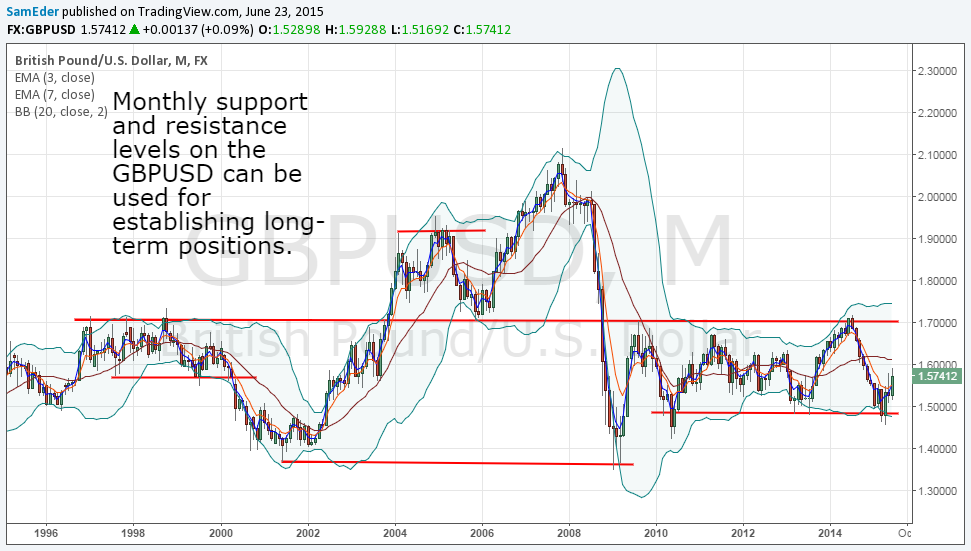
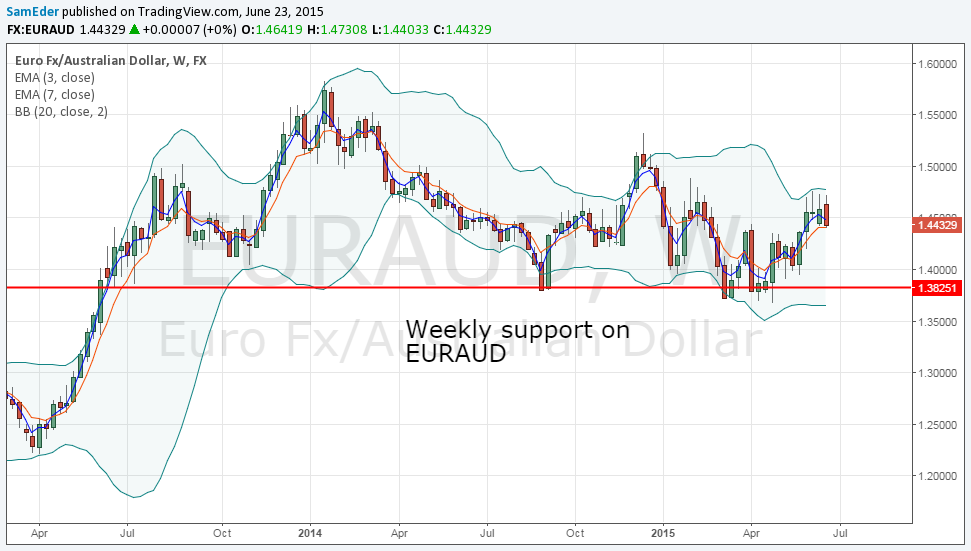
Look for key psychological levels:
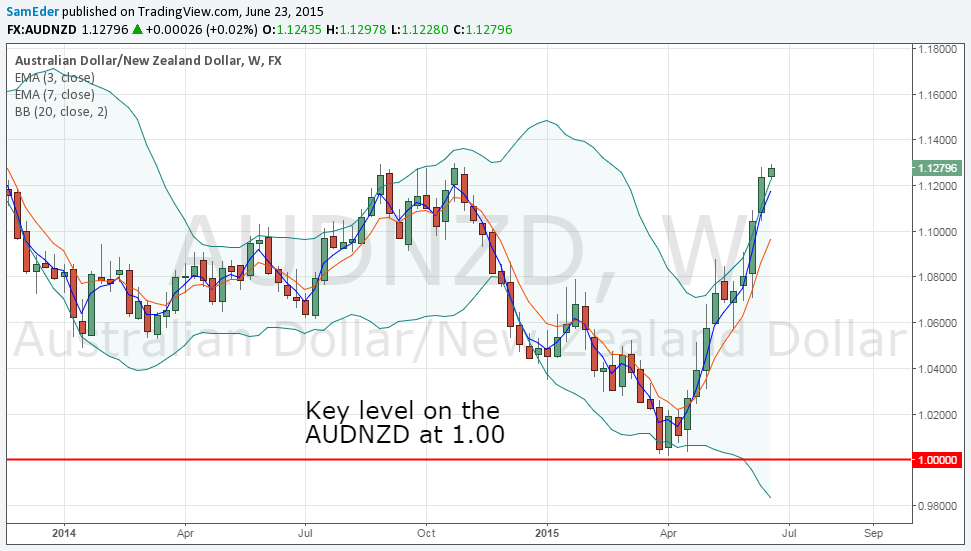
Look for double tops and bottoms:
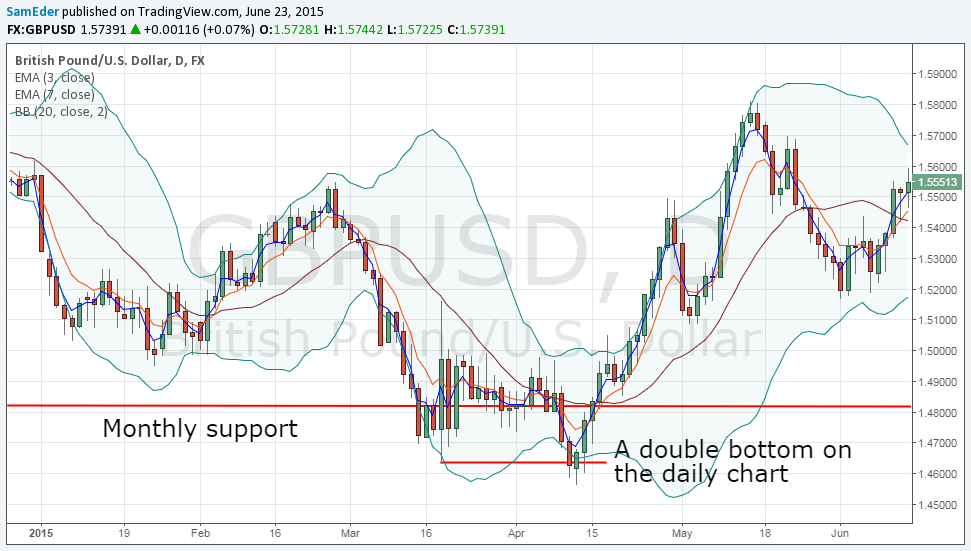
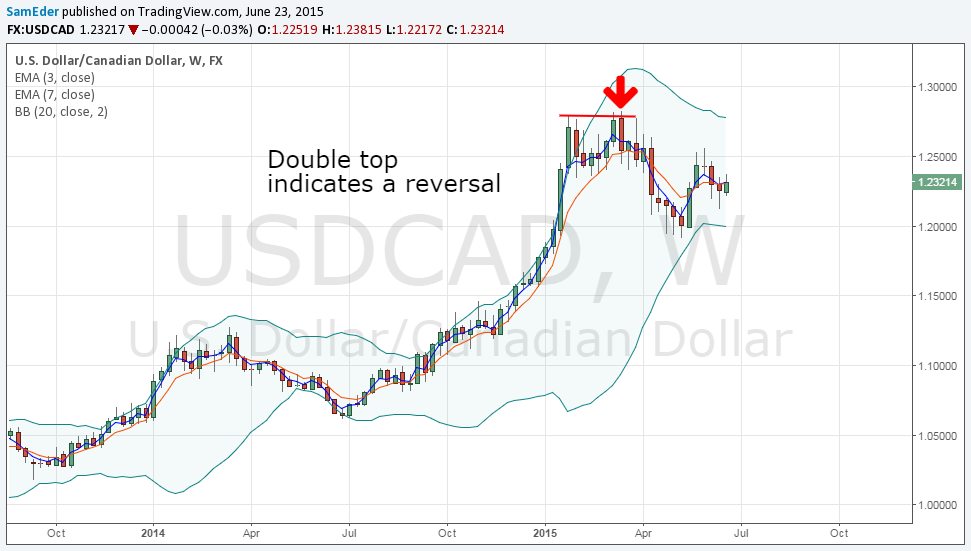
Look for periods of consolidation:
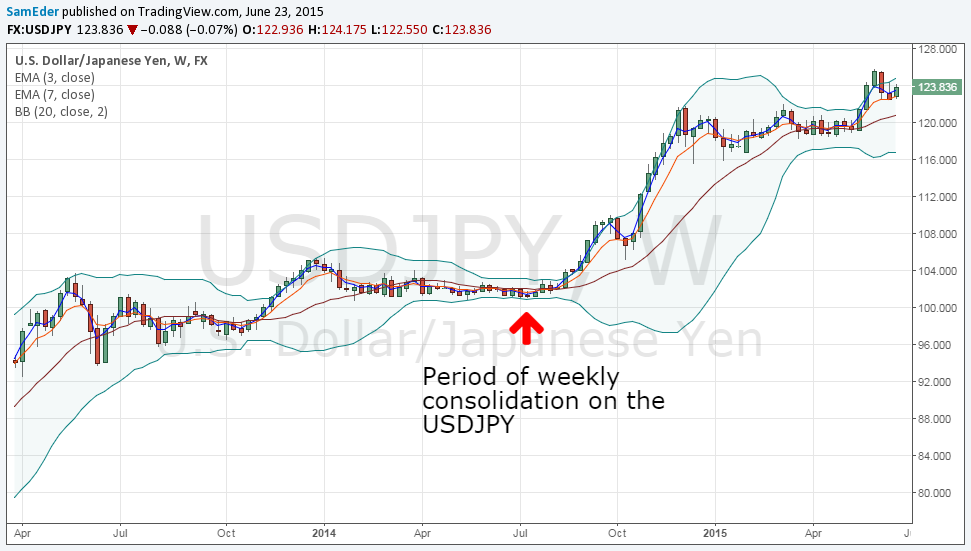
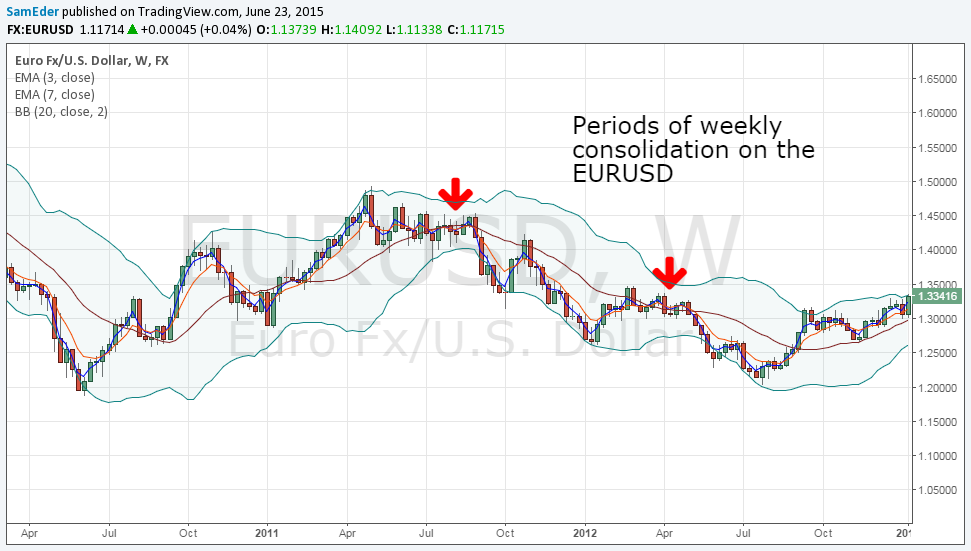
Timing the entry
You need an entry that provides you with two main things:
It keeps false signals to a minimum, to keep over-trading in check
It is very clear so you can be decisive
For these reasons, you generally want to wait for an entry signal on a weekly or monthly chart, although you can stalk an entry on the daily chart (more on that later).
You don't want to be too complicated by involving several indicators. Simple is better. Candlesticks on weekly charts can provide you with an entry that fits the criteria.
When entering off levels, what you want to do is wait until levels are taken out and the price reverses. In a Van Tharp newsletter, I heard this type of entry described as a "busted breakout" by Gabriel Grammatides (Apologies to Gabriel if this is not what he means).
This can be done on a weekly chart:
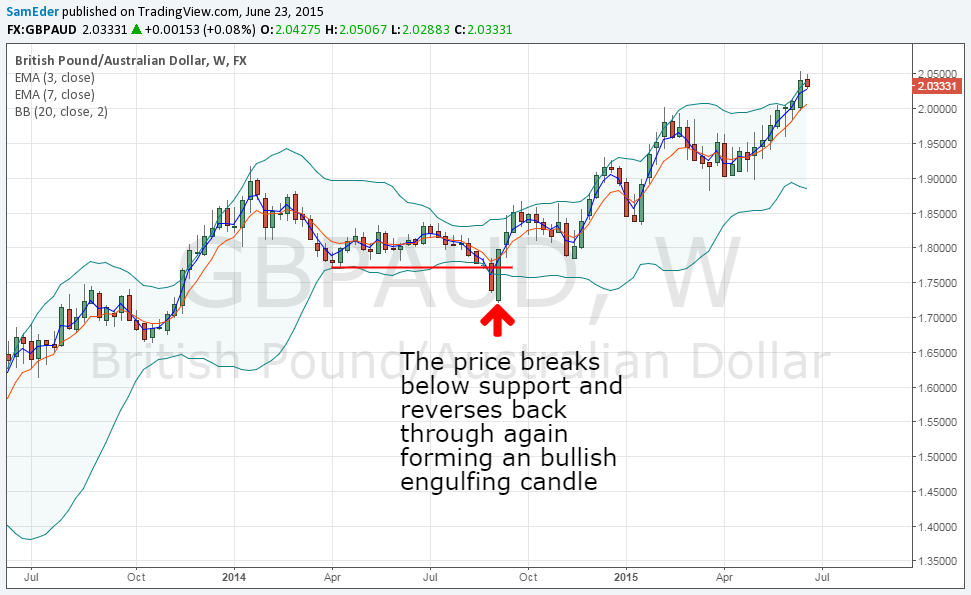
Or a monthly chart:
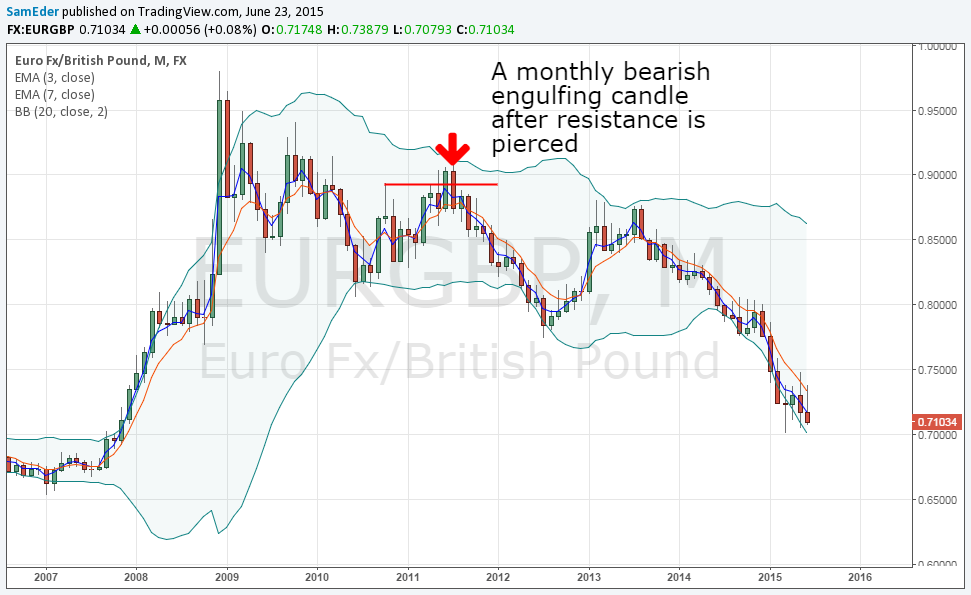
When you get a low volatility breakout, your entry will need to be different. Wait for a breakout and close above the Bollinger Band on a weekly chart.
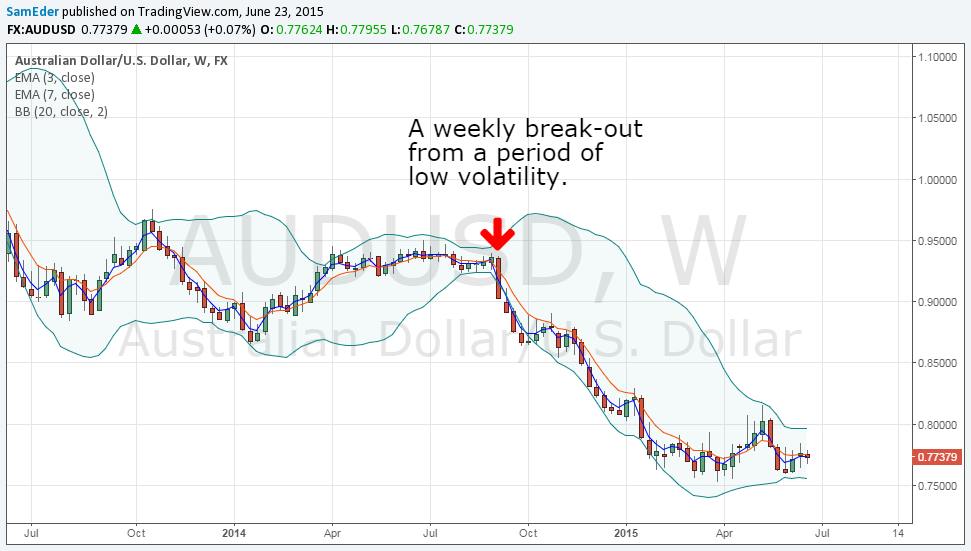
Finally, during trends, you can wait for pull-backs and engulfing candlesticks that resume the trend.
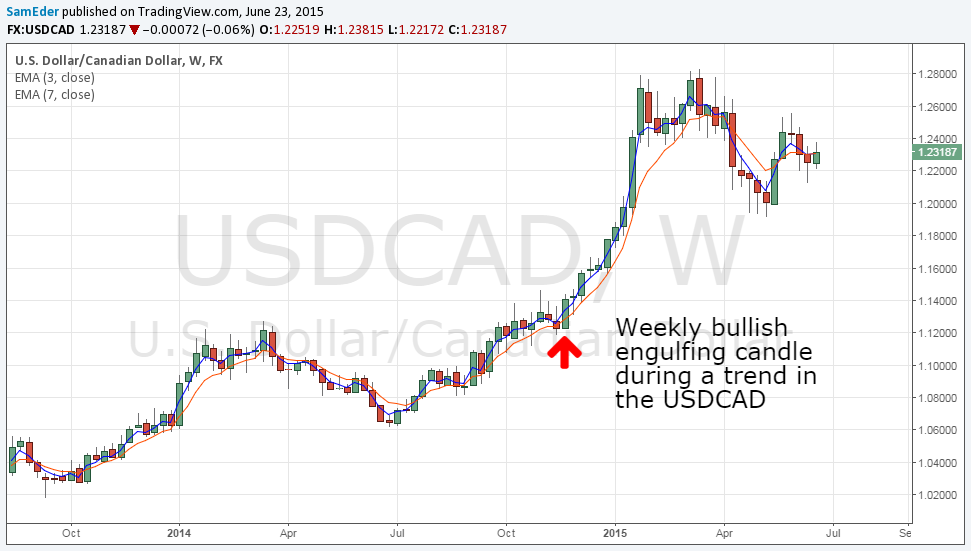
Stalk entries on the daily chart
There are some occasions when going down to a daily chart is appropriate.
During strong trends, if you get a period of low volatility on a daily chart (or even 4 hour charts for long periods of consolidation), you can enter on the breakout.
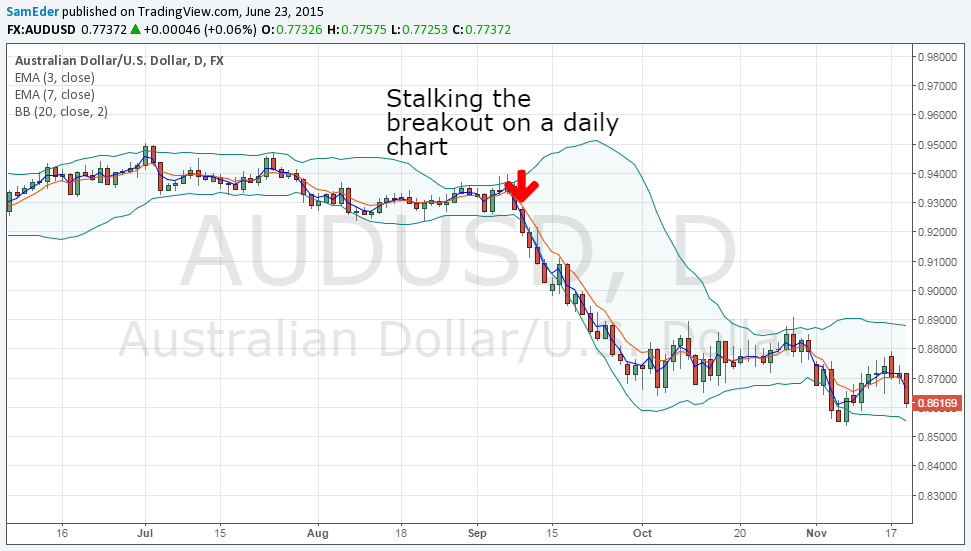
If you are at a weekly or monthly support or resistance level, you can enter early on a daily reversal. When you do so, you want to take a smaller position, with the goal being to improve the risk reward on the trade by entering at a better price. In this case, if the trade does not turn into a weekly entry (or close to it) you want to exit.
Lots more to come
We have made a start, but there is a whole lot more to capturing big moves than we have covered here.
In the next post, we will delve into the correct exit strategy, the psychology of long-term trends, and a number of subtle techniques that can improve your performance.
Until next time.
Cheers,
Sam
Want to learn more? Get Free Access toThe Advanced Forex Course for Smart Traders.
About the Author
Sam Eder is a currency trader and author of the Definitive Guide to Developing a Winning Forex Trading System and the Advanced Forex Course for Smart Traders (get free access)




